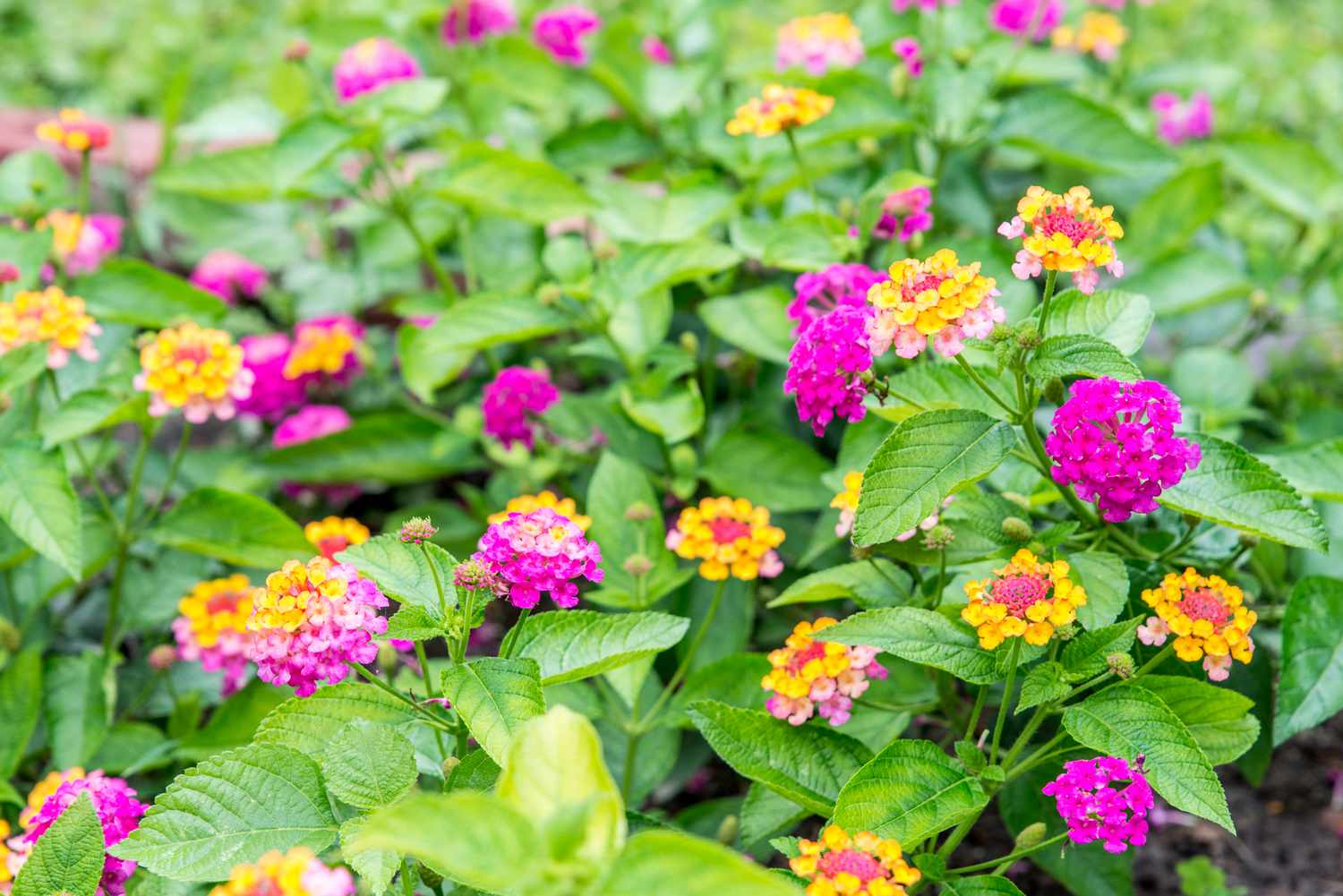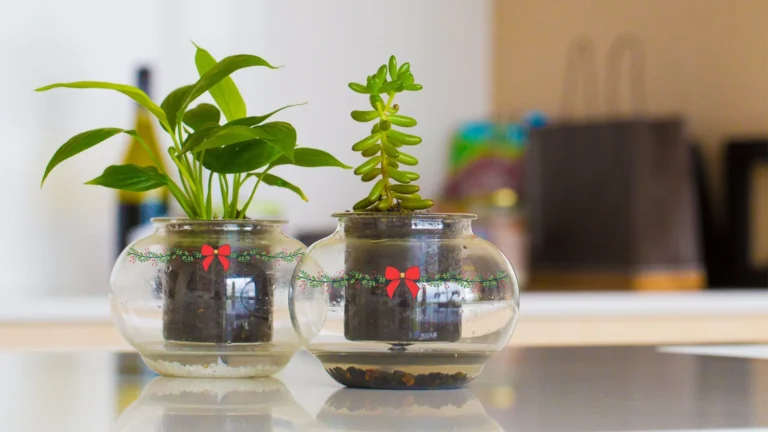Is Lantana Easy To Grow?
Lantana is a popular flowering shrub that is well-known for its hardiness and ease of care. It is a low-maintenance plant that can thrive in many different types of climates and soils. With a variety of colors and sizes available, lantana is a great choice for gardeners looking for a beautiful and easy-to-care-for plant. With the right conditions and care, it can be a great addition to any garden.
Overview of Lantana
Lantana is a colorful, easy-to-grow plant that is native to South and Central America and the Caribbean. It is a popular choice for gardeners due to its ability to thrive in a variety of climates and its vibrant flowers. This plant is drought-tolerant and can tolerate a range of soil types, making it a great option for anyone looking to add some color to their garden. Lantana is also a great choice for container gardening, as its size makes it easy to move around and keep in check. It is an ideal plant for those who don’t have a lot of time to dedicate to maintenance, as it requires minimal pruning and is pest resistant. Whether you’re looking to add some color to your outdoor living space or spice up your indoor décor, lantana is an easy-to-grow plant that can provide a multitude of benefits.
Benefits of Growing Lantana
Lantana is a beautiful flowering shrub that offers a variety of benefits for gardeners. Not only is it easy to grow, but it can also add color to any outdoor space. Growing lantana can also be beneficial to the environment. Lantana is a drought-tolerant plant that requires less water than other flowering plants. This means that it can be grown in areas where water is scarce, and it also helps conserve precious resources. Additionally, lantana is a great option for attracting wildlife, as it produces nectar-rich flowers that are a favorite of birds and butterflies. Lantana is a versatile plant that can be grown in a variety of climates and can be used as a groundcover, a border plant, or in containers. Furthermore, it is relatively low-maintenance and can adapt to different soil types. All in all, lantana is an easy-to-grow plant with many benefits that can bring beauty and life to any outdoor space.
Growing Conditions for Lantana
Lantana is a beautiful flowering shrub that is easy to grow and maintain. This versatile plant can thrive in a variety of climates and soil types, making it a great choice for gardeners looking for a low-maintenance plant. While Lantana can be grown in various conditions, there are some key factors to consider for optimal growth.
For starters, Lantana prefers full sun, so it is best to plant it in an area that receives at least six hours of sun a day. This helps the plant produce the most vibrant blooms. In terms of soil, Lantana does best in well-draining, slightly acidic soil. To ensure the soil drains properly, mix in organic matter such as compost or peat moss before planting.
Lantana also requires regular watering, as the plant is prone to wilting in dry conditions. Water it deeply, but be sure not to over-water. Lastly, fertilize your Lantana once a month during the growing season to ensure healthy growth and an abundance of flowers. With these tips and care, you can easily enjoy the vibrant blooms of Lantana without much effort.
Planting and Care Tips for Lantana
Lantana is a beautiful flowering shrub that is commonly seen in gardens and landscapes. Its colorful flowers attract butterflies and hummingbirds and its foliage adds a nice touch to any garden. But, is lantana easy to grow? The answer is yes! With the right planting and care tips, anyone can grow lantana in their garden.
When planting lantana, it is important to choose a location that receives at least 6 hours of direct sunlight each day. The soil should be well-drained and fertile and should be amended with compost before planting. When planting lantana, you should dig a hole twice as wide as the root ball of the plant and add plenty of organic matter to the soil. Water the plant thoroughly after planting and keep it evenly moist throughout the growing season.
Lantana is a heat-tolerant plant and can withstand temperatures of up to 100 degrees Fahrenheit. However, in areas with extreme heat, it is important to provide some shade for the plant. Fertilize lantana once a month during the growing season with a balanced fertilizer. Pruning the plant regularly will help to keep it from becoming too tall and unruly. Deadheading the flowers will also encourage new blooms.
With the right care and attention, lantana can be a beautiful addition to any garden. Its vibrant flowers and lush foliage will bring beauty and life to any outdoor space. With these planting and care tips, anyone can easily grow lantana in their garden.
:max_bytes(150000):strip_icc()/add-a-florida-touch-with-lantana-plants-2132142-06-eab2355d33b8428e93bcff702824a04e.jpg)
Common Pests and Diseases of Lantana
Lantana is a beautiful and versatile flowering shrub that is popular in home gardens. While it is generally easy to grow, lantana is vulnerable to certain pests and diseases that can reduce its vigor and impact its flowering. The most common pests and diseases of lantana include aphids, whiteflies, powdery mildew, and bacterial wilt.
Aphids and whiteflies feed on lantana, sucking out its sap and causing stunted growth. These pests can be controlled with insecticidal soap or other appropriate treatments. Powdery mildew is a fungal disease that can show up as a white powdery residue on the leaves of lantana. This can be addressed with fungicidal sprays. Bacterial wilt is a major problem for lantana, causing the plant to wilt suddenly without warning. Unfortunately, once a plant has been infected, there is no treatment. Gardeners should inspect their lantana regularly for signs of disease and take action as soon as possible.
Overall, lantana is a low-maintenance plant that is easy to grow. With proper care and regular monitoring, gardeners can protect their lantana from common pests and diseases. By taking the steps to address any issues promptly, gardeners can ensure their lantana plants stay healthy and vibrant.
Propagation of Lantana
Propagation of lantana is relatively easy and can be done in several ways, such as growing from seed, stem cuttings, root division, and layering. Growing from seeds is the most common form of propagation, and while it may take some time for the plants to establish, the effort is well worth it. Stem cuttings can also be taken from existing lantana plants and, with the right care, can be rooted and grown into healthy new plants. Root division is a more advanced form of propagation that requires the roots of an established lantana plant to be divided into multiple sections, with each section then transplanted into its own pot or garden bed. Layering is another method of propagation that involves burying a stem from an existing lantana plant into the soil, allowing it to develop its own roots before being separated from the parent plant. All of these methods are relatively easy and can help you grow more lantana plants for your garden.
Harvesting and Preserving Lantana
Harvesting and preserving lantana is a breeze. Lantana plants can be harvested at any stage of maturity and will last for weeks when stored properly. To harvest, simply snip off the flowers and leaves at the stem using scissors or pruning shears. Freshly harvested lantana is best stored in a cool, dry place, away from sunlight. If you’re looking to preserve lantana for a longer period of time, there are a few methods available. Drying and pressing lantana is a popular method of preservation. This is achieved by arranging the flowers and leaves on a flat surface and allowing them to air dry. Once dry, the flowers and leaves can be pressed between two pieces of paper and stored for later use. Another method of preserving lantana is to make a tincture. Tinctures are made by submerging the lantana in alcohol and leaving it to steep in a jar for a few weeks. The resulting liquid can be used as a medicinal or therapeutic aid. Regardless of the method chosen, harvesting and preserving lantana is a great way to enjoy its beauty throughout the year.
Alternatives to Lantana
If you’re looking for an attractive, low-maintenance flowering plant to add to your garden, then you may be considering lantana. This shrub is known for its bright, colorful blooms and its resilient nature. But if you want something a little different, there are plenty of alternatives to lantana that can provide similar benefits.
Coneflowers (Echinacea spp.), also known as purple coneflower, are popular perennials that come in a variety of colors including white, pink, and purple. They are easy to care for, drought tolerant, and attract bees and butterflies. Coreopsis (Coreopsideae spp.) is another great option, with bright yellow, orange, and red blooms that bloom throughout the summer. These plants are also low maintenance and can withstand hot, dry climates.
Calibrachoa (Calibrachoa spp.) is a beautiful annual flower that comes in a variety of colors. These petite plants have a trailing habit that looks great in hanging baskets or window boxes. They require minimal care and can thrive in full sun or partial shade. For a unique twist, consider a succulent garden. Succulents come in an array of shapes, sizes, and colors and require very little water.
No matter what type of plant you choose, there are plenty of alternatives to lantana that can brighten up your garden and provide color throughout the year. With a bit of research, you can find the perfect plant for your needs.
FAQs About the Is Lantana Easy To Grow?
1. How much sunlight does lantana need?
Lantana thrives in full sun and will need at least 6 hours of direct sunlight per day.
2. How often should I water lantana?
Lantana should be watered regularly and evenly, allowing the soil to dry out slightly between each watering.
3. What type of soil should I use for lantana?
Lantana grows best in well-draining soil with a slightly acidic pH between 6.0 and 6.5.
Conclusion
Overall, lantana is a relatively easy plant to grow, especially in warm, sunny climates. It requires little maintenance and is quite tolerant of a wide range of soil types and moisture levels. With proper care and attention, lantana can provide lovely, long-lasting blooms throughout the summer.






